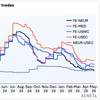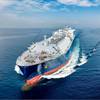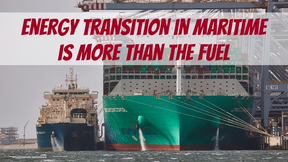Windward Tracks Change to GPS Jamming Hotspots
Winward’s latest report, focused on Q1 2025, indicates a major change in how vessels experiencing GPS jamming are appearing on tracking maps.
The average distance vessels “jump” to when their AIS is jammed grew from 600km in Q4 2024 to 6,300km in Q1 2025. “This distance completely disrupts trade and safety measures at sea, making it nearly impossible to track vessels within any realistic or relevant geographical vicinity,” says Windward.
“The main GPS jamming patterns we saw in Q4 were dense areas and smaller circles. These evolved in Q1 2025 to larger and more defined areas and straight lines.”
Three new jamming hubs were detected by Windward’s dedicated GPS jamming team and models in Q1 2025:
• Sudan in the Red Sea – from 0 affected vessels in Q4 2024 to more than 180 affected vessels in Q1 2025
• Djibouti in the Gulf of Aden – from 0 affected vessels in Q4 2024 to more than 30 affected vessels in Q1 2025
• From the Black Sea to the Gulf of Guinea – from 0 affected vessels in Q4 2024 to more than 120 affected vessels in Q1 2025.
Additionally, the report shows that Q1 2025 saw the highest number of sanctioned vessels since 2022 – both new vessels that were not previously designated and vessels that were already sanctioned by one regulator and have now been designated by additional ones.
88% of newly sanctioned vessels are tankers, clearly indicating the focus of regulators worldwide.
70% of newly sanctioned companies are located in five countries: Hong Kong, Seychelles, China, Russia and Marshall Islands.
The Comoros flag saw a 16% increase in flag changes to Comoros since Q4 2024. A similar increase was last seen in Q1 of 2024, following sanctions released for the Russia/Ukraine two-year mark.
Tanker-driven trade showed steady declines from late 2023, followed by a sharp disruption in March 2025 — likely tied to energy-related policy shifts. A stable pattern through 2024 gave way to a sudden drop in March 2025, driven almost entirely by reduced tanker activity — potentially linked to oil tariffs.
After a buildup in late 2024 and early 2025 — likely front-loading ahead of expected tariffs — both container and bulk flows dropped sharply in March 2025 – signaling the material impact of evolving tariff enforcement.












